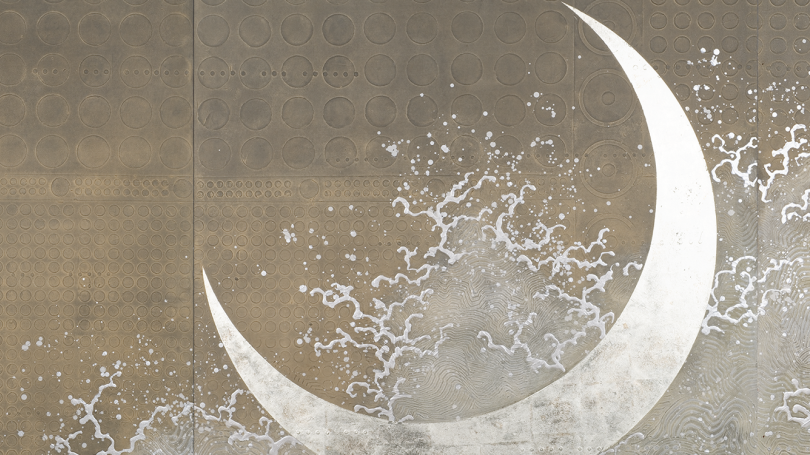HAELY CHANG, Jane and Raphael Bernstein Associate Curator of East Asian Art
In the early Heian period (794–1185), a Japanese Buddhist monk made his way to Mikurodo Cave on Shikoku Island, Japan. As he settled there, gazing at the sky and ocean through the cave's narrow entrance, the young monk reflected on how little humanity truly knows about itself in the vast universe. From this experience, he chose the Buddhist name Kūkai (空海), combining two kanji characters representing "sky" and "sea." This profound experience of unity with nature led Kūkai to attain enlightenment, and he would become one of the intellectual giants of Japanese Buddhism.
Twelve hundred years later, in 2015, Japanese artist Ken Matsubara revisited Mikurodo Cave, retracing the footsteps of Kūkai. Having been commissioned to create paintings for the walls and partitions of Jingoji Temple in Kyoto, Matsubara sought inspiration from the same scenery that enabled Kūkai's enlightenment. Matsubara's sojourn on Shikoku Island extended over two years, during which he immersed himself in the meditative seascape that once captivated the great monk.
"Mikazuki" Kukai's View; Crescent Moon 朏 reflects Matsubara's internalization of nature through Kūkai's vision. Across the empty screens of four fusuma, the sliding doors in a Japanese-style residence, Matsubara inscribed Kūkai's poem from Hizō-hōyaku (Precious Key to the Secret Treasury), an exegesis on the tenets of Shingon Buddhism. After covering the poem with Echigo washi paper, the artist applied soil, tonoko powder, water, and wood glue to create an embossed texture as well as celestial motifs on the panels. Matsubara provided the final touch with sumi ink and silvery mica pigment to emphasize the glow of the crescent moon above the ocean.
Matsubara's meticulous craftmanship produced a grandiose seascape with a luminescent crescent moon and breaking waves. However, appearance is not the only entry point to appreciating this painting. Upon a closer look at the painting's surface, viewers can observe multiple circles across the panels recalling those engraved on Japanese temple bells. The circular motifs represent the shape and movement of the sound and, in turn, the meditative chanting of Buddhist mantras. Kūkai's spiritual dedication is evoked yet again in this round embossing, as he was known for ceaselessly chanting mantras during his isolation in the cave.
Standing before "Mikazuki" Kukai's View; Crescent Moon 朏, the viewer can feel as though time itself is suspended by its colossal scale. The painting becomes a sanctuary where one can escape from the bustling demands of everyday life and reset the mind and spirit, guided at once by nature and religious insight.
Click here to view this object's catalogue entry.


